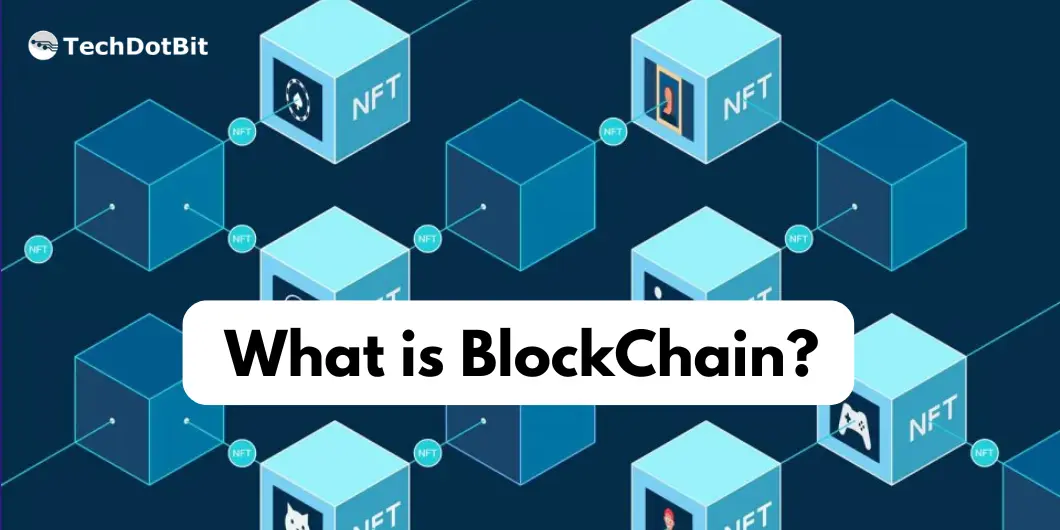Netflix, the global streaming titan, isn’t just celebrated for its rich content library; it’s also revered for a pioneering tech infrastructure that delivers exceptional user experiences to millions worldwide. Ever wondered what goes on behind that buffering icon? Let’s pull back the curtain on Netflix’s system design.
From Monolith to Microservices: The Evolution
Netflix’s tech journey began much like any other — with a monolithic architecture. However, as its user base skyrocketed, it pivoted to a microservices model. Here’s why:
– Scalability: With each service like billing, user management, or recommendations being an independent unit, they can be scaled separately based on demand. – Rapid Deployment: Changes to one service don’t affect others. This means faster rollouts and updates.
Delivering Content: The Role of Open Connect
While content is king, delivery is certainly queen. Netflix’s proprietary CDN, Open Connect, is strategically situated in ISPs across the globe.
– Low Latency: By housing content in regional servers, Netflix ensures lightning-fast content delivery. – Smart Content Routing: Open Connect doesn’t just store content; it decides the optimal location from which to serve a particular user.
Data: The Heartbeat of Netflix
Netflix’s recommendation engine, a standout feature, is a product of relentless data processing.
– Storage: While Cassandra, a NoSQL database, handles user data and movie metadata, MySQL looks after billing and account intricacies. – Real-time Data Streams: With Kafka, user activities are tracked in real time, feeding the recommendation engine.
– Big Data Analytics: Tools such as Spark and Hive dissect viewing patterns, powering a more personalized viewer experience.
Ensuring You Stay Glued: The Art of Personalization
Every film or series recommendation you see is the result of intricate algorithms and analytics.
– Tailored Suggestions: Machine learning models analyze your preferences. If you’ve binged three rom-coms in a row, be ready for a fourth recommendation! – Instant Feedback Loop: As you stream, real-time data adjusts recommendations, keeping them fresh and relevant.
Built for the Unexpected: Resilience and Security
Netflix’s resilience strategy is quite unique. They intentionally introduce failures!
– Enter Chaos Monkey: Part of a toolkit called the Simian Army, it sporadically kills instances to ensure Netflix can recover gracefully from failures. – Unwavering Security: With piracy being a persistent menace, Netflix uses robust encryption techniques to guard its content.
User-Centric Design: Seamless Across Devices
From smart TVs to smartphones, Netflix’s interface adapts gracefully.
– API Gateway (Zuul): It ensures your requests, whether it’s a content search or account change, reach the right microservice. – Ever-evolving UI: Through continuous A/B testing, Netflix refines its UI to be intuitive and user-friendly.
System Design: Netflix — A Comprehensive Architectural Overview
Netflix’s success isn’t just about a vast content library but also its sophisticated tech stack that ensures seamless delivery to millions of users worldwide. Let’s dive deep into the system design of Netflix.
1. Microservices Architecture:
Netflix transitioned from a monolithic architecture to a microservices model to achieve scalability and faster innovation.
– Microservices: Each functionality, like billing, recommendations, and user management, is a separate service. These services are independently deployable and scalable.
– Service Discovery: With hundreds of services, Netflix uses a service discovery system, Eureka, which helps services find and communicate with each other.
2. Content Delivery — Open Connect:
Netflix’s proprietary CDN, Open Connect, is strategically placed in ISPs worldwide.
– Regional Servers: These servers store content and serve them to users in that region, reducing latency.
– Intelligent Routing: Open Connect decides the best location from which to serve content to a particular user.
3. Data Storage & Processing:
– Cassandra: A NoSQL database, Cassandra is used for scalability and fault tolerance. It stores customer data, movie metadata, and viewing histories.
– MySQL: Used for billing and account management.
– Kafka: An event streaming platform that collects real-time data on user activities.
– Big Data & Analytics: Netflix uses Spark, Hive, and Pig for data processing. These tools help analyze user preferences and viewing patterns.
4. User Data & Personalization:
– Recommendation Engine: Uses machine learning algorithms, matrix factorization, and deep learning to offer relevant content suggestions.
– Real-time Analytics: As users stream, data is processed in real time to adjust recommendations.
5. Resilience and Failover Strategy:
– Chaos Monkey: Part of the Simian Army set of tools, it randomly terminates instances in production to ensure the system can tolerate failures.
– Fallback Mechanisms: In case of failure, backup mechanisms kick in to ensure service continuity.
6. User Interface & Experience:
– API Gateway (Zuul): Manages and routes requests to appropriate microservices.
– Dynamic UI: Interfaces are designed to be dynamic, catering to different devices, from TVs to mobiles.
– A/B Testing: Various UI/UX versions are tested in real-time to optimize user experience.
7. Security:
– Encryption: Content is encrypted to protect against piracy.
– Secure Delivery: Secure protocols ensure that content is securely delivered to end-users.
– Authentication & Authorization: OAuth and other mechanisms are used for user verification and access control.
8. Global Reach & Scaling:
– Regional Failover: If one region’s infrastructure faces issues, traffic is rerouted to another region.
– Auto-scaling: Depending on demand, Netflix can automatically scale its resources up or down.
– Multi-CDN Strategy: Apart from Open Connect, Netflix also leverages other CDNs to ensure availability.
9. Backend Workflow:
– Encoding: Before content is available for streaming, it’s encoded into various formats to support different devices and network speeds.
– Metadata Management: Information about content, such as actors, directors, and genres, is managed and stored for easy retrieval.
Alright! Let’s break down this diagram.
1. Devices: On the left, you see various devices like smartphones, gaming consoles, and computers. These represent the devices that end-users use to access Netflix.
class Device {
String type; //e.g., "smartphone", "desktop", "console"
String OS;
}2. OPEN CONNECT: Netflix’s content delivery network (CDN) specifically designed to serve Netflix video content. It is strategically distributed around the world to provide the best possible streaming experience to the users.
class OpenConnect {
String location; //e.g., "North America", "Asia"
distributeContent(VideoContent content);
}
3. ELB: Stands for Elastic Load Balancer. It’s a service offered by AWS to distribute incoming application traffic across multiple targets, ensuring that the incoming user requests are balanced and directed to healthy servers.
class ELB {
distributeTraffic(Request request);
}4. Netty Server: Netty is an asynchronous event-driven network application framework. Netflix uses it to handle and route incoming traffic.
class NettyServer {
handleRequest(Request request);
}import io.netty.bootstrap.ServerBootstrap;
import io.netty.channel.EventLoopGroup;
import io.netty.channel.nio.NioEventLoopGroup;
public class NettyServer {
private int port;
public NettyServer(int port) {
this.port = port;
}
public void start() throws Exception {
EventLoopGroup bossGroup = new NioEventLoopGroup();
EventLoopGroup workerGroup = new NioEventLoopGroup();
try {
ServerBootstrap bootstrap = new ServerBootstrap()
.group(bossGroup, workerGroup)
.channel(NioServerSocketChannel.class)
.childHandler(new ServerInitializer());
bootstrap.bind(port).sync().channel().closeFuture().sync();
} finally {
bossGroup.shutdownGracefully();
workerGroup.shutdownGracefully();
}
}
}5. ZULU: It’s an edge service that handles routing of requests.
class Zulu {
route(Request request);
}6. Micro Services: The diagram shows multiple microservices that Netflix uses for different purposes like billing, critical services, etc. These are individual applications, each responsible for particular tasks.
interface MicroService {
Response processRequest(Request request);
}7. EVC Cache, CASSANDRA, MySQL: These are data storage solutions. EVC Cache likely refers to a caching layer, Cassandra is a NoSQL database, and MySQL is a relational database. They store user data, movie data, billing information, etc.
interface Database {
save(Data data);
Data retrieve(String query);
}import com.datastax.driver.core.Cluster;
import com.datastax.driver.core.Session;
public class CassandraClient {
private Cluster cluster;
private Session session;
public void connect(String node) {
cluster = Cluster.builder().addContactPoint(node).build();
session = cluster.connect();
}
public Session getSession() {
return this.session;
}
public void close() {
session.close();
cluster.close();
}
}8. KAFKA: Apache Kafka is used as a message broker to handle real-time data feeds. It’s very scalable and allows for the processing of huge amounts of real-time data.
class Kafka {
publish(Topic topic, Message message);
subscribe(Topic topic);
}import org.apache.kafka.clients.producer.*;
public class KafkaProducerExample {
private String topicName;
private Properties props;
public KafkaProducerExample(String topicName) {
this.topicName = topicName;
props = new Properties();
props.put("bootstrap.servers", "localhost:9092");
props.put("key.serializer", "org.apache.kafka.common.serialization.StringSerializer");
props.put("value.serializer", "org.apache.kafka.common.serialization.StringSerializer");
}
public void produceMessage(String key, String value) {
Producer<String, String> producer = new KafkaProducer<>(props);
producer.send(new ProducerRecord<>(topicName, key, value));
producer.close();
}
}9. CHUKWA & EMR: Chukwa is a data collection system, and Amazon EMR (Elastic MapReduce) is a managed Hadoop framework. They’re used for big data processing and analysis.
class DataProcessor {
collect(Data data);
process(Data data);
}10. Elasticsearch & Spark: Elasticsearch is a search engine used for log and event data analysis, while Spark is a distributed computing system.
class SearchEngine {
search(String query);
}
class DistributedComputing {
compute(Data data);
}import org.elasticsearch.client.RestHighLevelClient;
import org.elasticsearch.client.Request;
import org.elasticsearch.client.Response;
public class ElasticsearchClient {
private RestHighLevelClient client;
public ElasticsearchClient() {
client = new RestHighLevelClient(RestClient.builder(new HttpHost("localhost", 9200, "http")));
}
public Response search(String jsonQueryString) throws IOException {
Request request = new Request("POST", "/index_name/_search");
request.setJsonEntity(jsonQueryString);
return client.performRequest(request);
}
public void close() throws IOException {
client.close();
}
}11. Chaos Monkey & TITUS: Chaos Monkey is a tool developed by Netflix to randomly terminate instances in production to ensure that engineers implement services that are resilient to instance failures. TITUS is Netflix’s container management platform.
class ChaosMonkey {
disrupt(Service service);
}
class Titus {
deployContainer(Container container);
}This is a simplified explanation, and each component can be deep-dived into for more details. The primary purpose of this diagram is to show how different systems interact and provide a reliable, scalable, and resilient streaming service for Netflix’s massive user base.
Is there a specific part of the architecture you’d like to know more about?
In Conclusion: A Streaming Juggernaut
In conclusion, Netflix’s architecture is an intricate blend of cutting-edge technologies and strategies. It’s designed for global scale, fault tolerance, and a high degree of personalization, making it a leader in the streaming industry.
Behind every play button on Netflix is an intricate web of technologies and strategies. Designed for a global audience, emphasizing fault tolerance, and offering a high degree of personalization, Netflix’s architectural brilliance sets it apart in the streaming cosmos.








